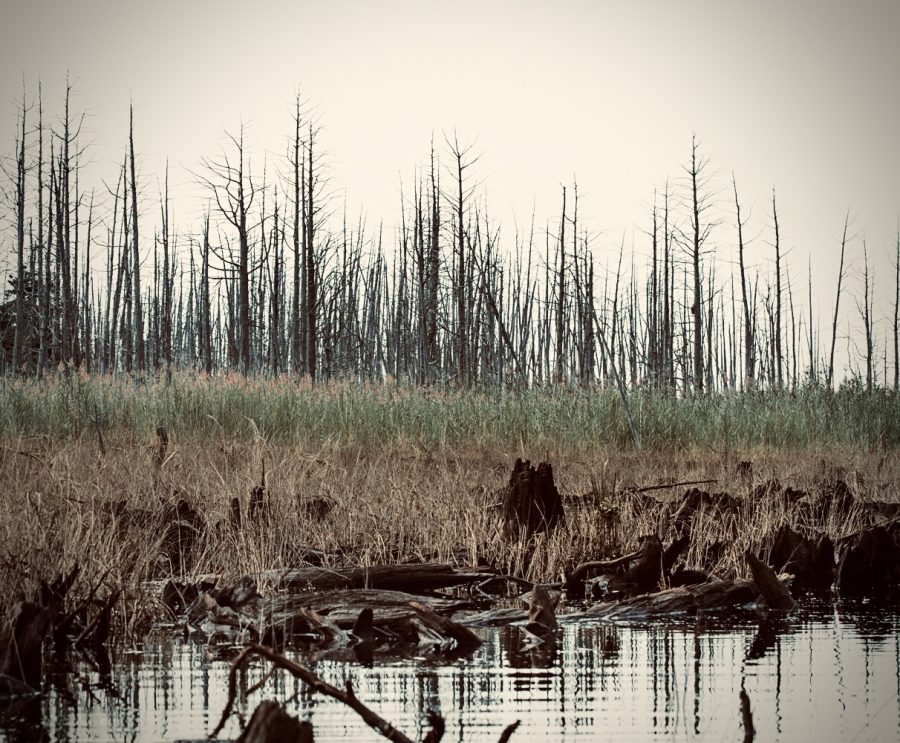Bringing Ghost Forests Back To Life
October 14, 2021
A “ghost forest” is an apt name for a haunting thing.
Picture this–a forest of pale, bleached trees, branches reaching for the sky but unable to hold onto their foliage. There’s fog rising off of the swampy terrain they stand in. Not much life surrounds the barren trees.
Does that sound like the perfect setting for a horror movie? Natural Resources student, Jorge Fuentes, thinks it does. In reality, it’s only a description of a type of forest. The “ghost forests” are actually dead stands of trees called Atlantic white cedars. It’s stated on njaudobon.org that these trees grow in freshwater swamp areas along the East Coast and house some rare and endangered species, including four-toed salamanders, Pine Barrens tree frogs, and the swamp pink lily. They also hold storm water and filter the groundwater in the areas they grow in. These trees can live between a couple hundred and over a thousand years, but most of the oldest trees are gone by now.
The New Jersey Department of Environmental Protection (NJDEP) has said that of the estimated 500,000 acres of Atlantic White Cedars in the U.S., there remain less than 125,000 acres. According to New Jersey Audubon, Atlantic white cedars in the state have dwindled down to a third of their original acreage. In the past, the trees were heavily used for their disease and pest resistant wood. More recently, climate change is causing floods close to the coast in the freshwater swamps white cedars inhabit, inundating them with saltwater. The cedars are unable to grow in saltwater, resulting in dead trees. Patches of these ghostly trees are spreading farther along the coast the more sea levels rise.
To combat this, New Jersey is putting massive conservation plans into action. The NJDEP announced on Sept. 23 their plan to restore over 10,000 Atlantic white cedars. This ten-year project will be the largest conservation effort in the United States. Shawn LaTourette, the environmental protection commissioner of New Jersey, said, “Through this project, we will reestablish once-dominant stands of Atlantic white cedar, but at higher elevationsTr less vulnerable to rising seas and saltwater intrusion, and provide habitat for globally rare plants and wildlife, while capturing and storing carbon and absorbing floodwaters.” It will cost New Jersey a staggering $20 million, but the state will pay for the project with settlement money from cases against companies that produced and sold an oil additive that polluted groundwater across the country. Fuentes says, “I think it’s good that they’re using the money from companies that already damaged the environment.”
The efforts will hopefully pay off and succeed in bringing back the majestic cedar forests. As Carleton Montgomery, executive director of the Pinelands Preservation Alliance, says, “Atlantic white cedar forests are very special places, and you know it as soon as you step into one.”








